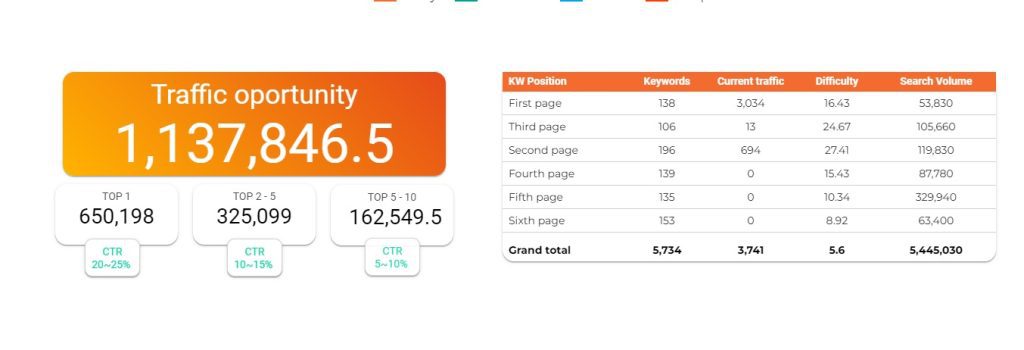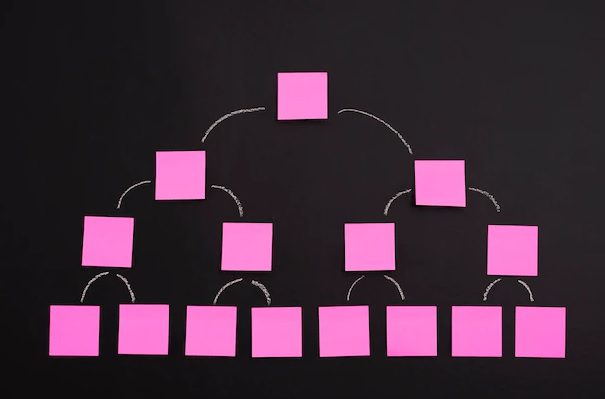Maybe you still don’t understand what a cluster is or you are wondering why it is really useful for your website. Today, we’d like to explain why it’s crucial, if not essential, that you incorporate this strategy into your project.
We will explain in simple terms what we do every day with our clients so that you can apply it and get very significant results in the shortest amount of time.
First of all, what is a cluster?
If your website is disorganized, your visitors will become disoriented and unsure of how to find what they are looking for. The same thing happens when Google crawls it and is confused by the chaos of your content and links. Do you have any idea what will happen? Both will abandon your site in favor of competitors who understand how to structure a website.
This is addressed by proper content and navigation clustering. In other words, proper organization based on common characteristics, allowing us to create categories and subcategories within our target audience.
How to determine whether your website requires clustering
A client’s circumstances, resources, or time constraints may limit the scope of an in-depth marketing plan or changes involving cross-departmental strategies.
However, opportunities present themselves in a variety of ways, and it is possible to begin with what needs to be corrected immediately and then make other changes that require more financial or human resources.
This is the point at which we want you to understand why implementing a cluster will help you achieve better results with less investment.
- The first advantage of using a cluster is that it allows you to properly segment your audience and their interests based on your keywords.
- As a result, it enables you to target the right people, which is essential for a successful marketing campaign that can result in conversions.
- The second advantage of this type of organization is that it allows search engines to understand the semantics of the website, making navigation easier for both them and users.
- As a result, it will assist you in positioning yourself in these search engines in order to generate more traffic.
- And, of course, it will save you significant time.
To determine the cluster structure of a website, it is best to first conduct a Market Reach and a Data Studio to determine what the real traffic opportunities are versus what is currently being recorded.
Here’s how we did it for one of our clients as an example. The total number of ranked keywords, approximately 5700, brought him traffic of slightly more than 3,700 visits per month, as shown in the first image.

However, the reality is that he was missing out on over a million visits because there was no cluster connecting his keyword group together:

How to implement a cluster
Now, what does a cluster look like? The concept refers to the grouping of website pages via links, known as a navigation cluster, or related content, known as a content cluster. Furthermore, the containing keywords must be related to one another.
In order for you to visualize it, its structure is a vertical hierarchy based on the level of importance of the content. A cluster’s goal is to strengthen important content in order to improve its ranking.
As a result, there are various levels for page types and links. Third-level pages are linked to one another as well as to second-level pages. The main page is linked from the second level pages.
Furthermore, third level pages use long tail keywords, which are very specific in comparison to the main keyword but are always related to it. They are easier to rank for highly specific searches.
A website with the homepage as the main content and page is an example of correctly applied clustering. The second level of categories, and finally the pages with specific content, such as your blog or a product page.

What are the cluster types for your website
Nowadays, semantic search has outperformed keyword search. The user asks very specific questions to the search engine, and the search engine responds with results that are very closely tailored to the user’s information needs. We no longer look for “running shoes,” but rather “What are the best running shoes?”
Search engines change their algorithms because it is clear that users’ information requests are changing. Previously, queries were made without the use of connectors; however, consumers are now formulating more precise phrases. Keywords are still important because they are the seed of a cluster, but we can no longer rely on them exclusively for content strategies.
As a result, Google anticipates that our architectures will be as simple as possible. In other words, it expects us to organize the content so that the main page is the pillar on which the search engine considers us to be experts and from which other content is born to reinforce it. At this point, it is time to organise the main topic and the contents and links that support it:
- Content cluster: its goal is to improve the SEO ranking of the main content and enhance the site’s semantics. Secondary content is created to supplement the main content. Long tail keywords are used which are related to the main keywords but which satisfy much more specific user intentions.
- Navigation cluster: its aim is to drive more traffic to the main content, which facilitates navigation and prioritizes usability and navigability. The structure or links are being improved in this case. Links are added to the content of the secondary and top-level pages to accomplish this, and thematically related categories are linked to one another.
They are not, of course, mutually exclusive, and a combination of the two is ideal for a successful strategy.
If they do it, so should you
We present an example of a website that employs the cluster model (and does so admirably!). As shown below, Good House Keeping is a lifestyle website that provides content about the home, products, recipes, and so on.
Product Reviews, Life, Food, Beauty, and Home are its primary clusters. Each cluster contains content that supports and is directly related to the pillar page.

Posts are written in these various categories based on their subject matter. In other words, while you can find decorating ideas for your living room in the “Home ideas” section, you won’t find cooking recipes.

Before we part ways, we’d like to share an idea with you: in order to use cluster techniques effectively, you must conduct extensive keyword research. The contents are linked to a strategy and those that do not exist must be generated in order to build the cluster structure.
In addition, you must be careful with content cannibalization. This is the result of targeting a keyword with an excessive amount of content on the same web page. This confuses Google, which is unable to determine which option is the best and entails the risk that you end up competing with yourself.
Do you want us to handle the entire process for you? Contact us and an SEO manager will assist you in developing your strategy.






